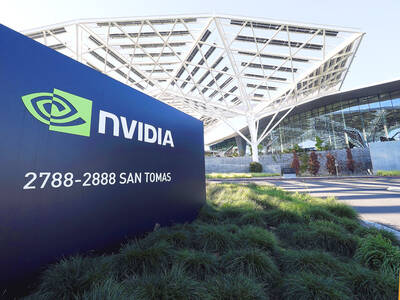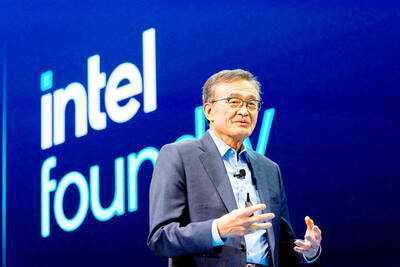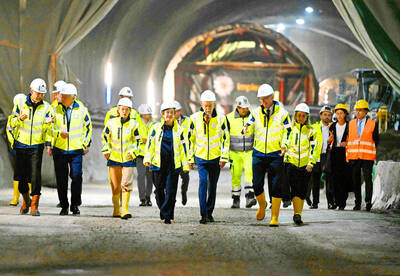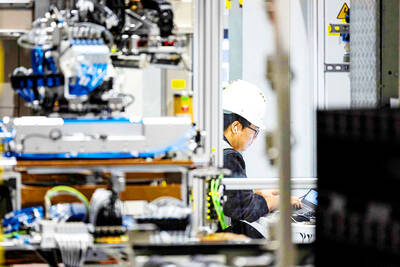The number of buildings in Taiwan receiving or being pre-approved for green building certification has risen almost 70 times in eight years, to 349 last year from five in 2000, the Council for Economic Planning and Development (CEPD) said yesterday.
Considerable progress had been made promoting sustainable buildings since the Ministry of the Interior launched its green building program in 2001, the CEPD said.
As of September this year, 2,295 buildings have been certified as “green buildings,” and they have reduced carbon dioxide emissions by 521,000 tonnes annually and saved users NT$2.16 billion (US$66.5 million) in electricity and water charges.
Taiwan became the fourth country in the world to implement a green building certification protocol when it introduced its unique EEWH (ecology, energy saving, waste reduction and health) system in 1999.
The system, specially tailored to account for Taiwan’s tropical and subtropical climate, considers nine indicators in the four categories to determine whether a building meets “green” criteria.
Taiwan was also the first country in which the government took the lead in promoting the initiative, renovating public buildings and requiring them to meet the criteria, while including special clauses in its building code on sustainability.
Last year, Taiwan launched a four-year program to promote ecological cities and green buildings. It is expected to spend NT$2 billion by 2011 on renovating metropolitan districts and traditional street areas, improving interior green design technology and establishing a market mechanism for green building materials, the CEPD said.
The four-year project is expected to reduce carbon dioxide emissions by an additional 270,000 tonnes every year and lower electricity and water fees by NT$890 million a year.
The CEPD also said the government would look to place controls on projects with large construction sites to improve the quality of living in cities.

CHIP RACE: Three years of overbroad export controls drove foreign competitors to pursue their own AI chips, and ‘cost US taxpayers billions of dollars,’ Nvidia said China has figured out the US strategy for allowing it to buy Nvidia Corp’s H200s and is rejecting the artificial intelligence (AI) chip in favor of domestically developed semiconductors, White House AI adviser David Sacks said, citing news reports. US President Donald Trump on Monday said that he would allow shipments of Nvidia’s H200 chips to China, part of an administration effort backed by Sacks to challenge Chinese tech champions such as Huawei Technologies Co (華為) by bringing US competition to their home market. On Friday, Sacks signaled that he was uncertain about whether that approach would work. “They’re rejecting our chips,” Sacks

NATIONAL SECURITY: Intel’s testing of ACM tools despite US government control ‘highlights egregious gaps in US technology protection policies,’ a former official said Chipmaker Intel Corp has tested chipmaking tools this year from a toolmaker with deep roots in China and two overseas units that were targeted by US sanctions, according to two sources with direct knowledge of the matter. Intel, which fended off calls for its CEO’s resignation from US President Donald Trump in August over his alleged ties to China, got the tools from ACM Research Inc, a Fremont, California-based producer of chipmaking equipment. Two of ACM’s units, based in Shanghai and South Korea, were among a number of firms barred last year from receiving US technology over claims they have

It is challenging to build infrastructure in much of Europe. Constrained budgets and polarized politics tend to undermine long-term projects, forcing officials to react to emergencies rather than plan for the future. Not in Austria. Today, the country is to officially open its Koralmbahn tunnel, the 5.9 billion euro (US$6.9 billion) centerpiece of a groundbreaking new railway that will eventually run from Poland’s Baltic coast to the Adriatic Sea, transforming travel within Austria and positioning the Alpine nation at the forefront of logistics in Europe. “It is Austria’s biggest socio-economic experiment in over a century,” said Eric Kirschner, an economist at Graz-based Joanneum

France is developing domestic production of electric vehicle (EV) batteries with an eye on industrial independence, but Asian experts are proving key in launching operations. In the Verkor factory outside the northern city of Dunkirk, which was inaugurated on Thursday, foreign specialists, notably from South Korea and Malaysia, are training the local staff. Verkor is the third battery gigafactory to open in northern France in a region that has become known as “Battery Valley.” At the Automotive Energy Supply Corp (AESC) factory near the city of Douai, where production has been under way for several months, Chinese engineers and technicians supervise French recruits. “They